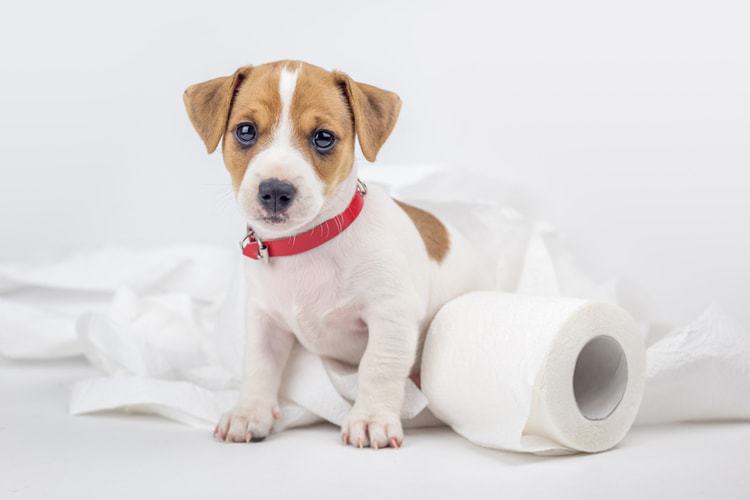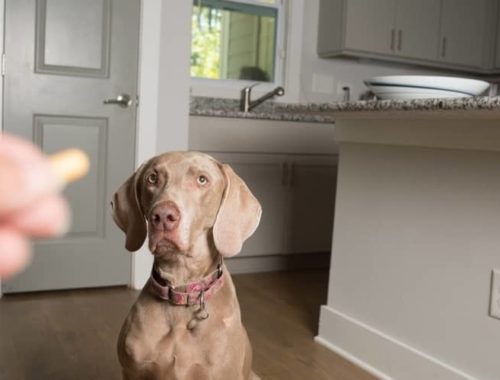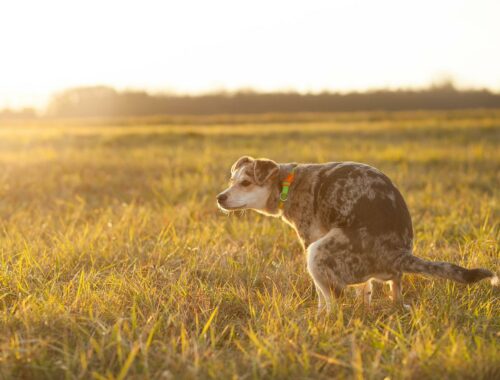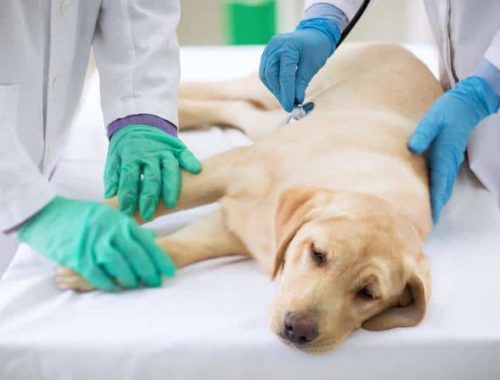When most people see their dog straining to defecate, they assume he’s constipated. The truth is that often the dog is straining because he has diarrhea, not constipation. In fact, most dogs will strain a lot when they have diarrhea due to intestinal cramping.
How Do You Know If Your Dog Is Constipated?

If constipation goes on for a long time, your dog can lose his appetite. Vomiting can follow due to the backup in his colon.
Causes of Constipation in Dogs
- Dietary indiscretion (eating bones, plastic, garbage, etc.)
- Metabolic disease that causes dehydration or electrolyte problems
- Tumors in the GI tract
- Neurological abnormalities (spinal or neuromuscular problems)
- Orthopedic pain (usually involving the spine or rear limbs)
- Medications (narcotics, antihistamines, and antacids)
- Behavioral issues (anxiety)
- Matted fecal material in fur blocking the anal opening
What to Do If Your Dog Is Constipated
It’s OK to try home remedies for constipated dogs as long as the symptoms are mild and have been going on for less than 24 hours.
If your dog is taking other medications or has existing medical problems, it is best to take her to see the vet rather than trying home remedies.
What Is a Good Laxative for a Dog?
- Psyllium. It works by absorbing water and bulking feces in the colon. It may take up to 72 hours for laxative action to occur. Buy psyllium husk powder in the pharmacy, grocery store or online. Look for the unflavored, unsweetened version of psyllium. A common brand-name product is Metamucil. Dosing dogs: twice a day, give one teaspoon for 1-10 pound dogs, 2 teaspoons for 11-30 pound dogs, 3 teaspoons for dogs over 30 pounds. There is a veterinary product called Vetasyl that comes in tablet form that you can buy online. Psyllium needs to be given with plenty of water or other liquids, to be effective.
- Canned pumpkin. Use plain canned pumpkin. It is high in moisture and fiber. Most dogs like the taste of it, too. You can try giving one tablespoon to dogs up to 20 pounds, two tablespoons for dogs 21-60 pounds and three tablespoons for dogs over 60 pounds. Repeat the dose 2-3 times a day. It’s OK to mix the pumpkin with other food.
- Docusate sodium 100 mg tablets (brands include Colace and Surfak). Docusate sodium is fairly safe to use in dogs but can cause cramping and diarrhea if too much is given. Use caution if you try it. Don’t keep giving repeated doses if it doesn’t work after 24 hours. The dose for dogs is 1/4 to 1 of the 100 mg tablets (25-100 mg), given by mouth depending on the size of the dog. It may be given once or twice a day, but if it’s not working after 24 hours, take your dog to see a veterinarian. Don’t buy any product that has other ingredients such as senna, as it may be too strong for a dog.
- Stay away from other laxatives made for humans or mineral oil. Laxatives can cause severe, painful cramping and even diarrhea. Use them only with veterinary supervision. Mineral oil given orally can be dangerous because of the risk of aspiration (breathing the oil into the lungs).
Increase Fluid Intake
- Feed a canned dog food or homemade bland diet. It’s difficult to persuade a dog to drink more water. By increasing the amount of fluid in her food by feeding your dog canned food or a homemade bland diet, one can achieve the same effect. Be sure to make any diet changes gradually over a 7-day period, to avoid gastrointestinal disturbances.
- Add liquid to dry dog food. If changing your dog’s diet is not a good option, you can try adding water or low-sodium broth to your dog’s dry dog food.
Provide Frequent Potty Opportunities
- Provide four to six opportunities each day for a stress-free potty break. Allow at least 10 minutes for each potty break. Most dogs like to walk around and sniff things for a while before they eliminate. Stay relaxed and don’t rush your dog!
- Seek a quiet area with dog’s preferred surface. Every dog is different–some prefer to defecate on grass and some like gravel. I’ve known dogs who refused to have a bowel movement unless they could hide in tall grass or behind shrubs.
Increase Exercise
- Set a goal of 45 minutes of walking your dog per day. Even if you can’t get 45 minutes of exercise in at one time, you could split it into two sessions.
When to Seek Veterinary Care
- Your dog has been constipated more than 24 hours.
- You’ve tried one or two home remedies without improvement.
- Your dog is vomiting, seems distressed, or is not eating.
Read more about how to treat constipation in dogs.
Featured Image Credit: Smit, Shutterstock
Photo credits:
“Obese canine from New Orleans” cc by 2.0 by Mr. TGT
“Cavalier King Charles Spaniel” cc by 2.0 by Mario Simoes

































